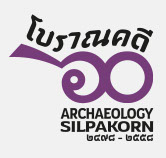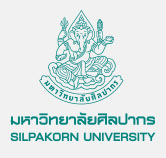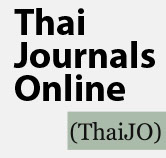
การประดิษฐานพระบรมสารีริกธาตุสมัยทวารวดี
THE INAUGURATION OF BUDDHA RELICS DURING THE DVARAVATI PERIOD
โดย จีราวรรณ แสงเพ็ชร์ / By Jeerawan Sangpetch
Damrong Journal, Vol 9, No.1, 2010
บทคัดย่อ:
สารีริกเจติยะ หรือ ธาตุเจดีย์ คือ สถูปเจดีย์ที่ประดิษฐานพระบรมสารีริกธาตุภายหลังการถวายพระเพลิงพระพุทธสรีระและโทณพราหมณาจารย์ ได้แบ่งพระบรมสารีริกธาตุเพื่อให้เหล่ากษัตริย์และพราหมณ์อัญเชิญกลับไปประดิษฐานยังนครของตน สำหรับรายละเอียดและขั้นตอนการประดิษฐานพระบรมสารีริกธาตุนับเป็นสาระสำคัญที่จะปรากฏในวรรณกรรมพุทธศาสนาในดินแดนและสมัยต่างๆ รวมทั้งอาจจะมีข้อความที่เกี่ยวข้องกับการรจนาหลักฐานประวัติศาสตร์ เป็นบทกล่าวเกริ่นนำเรื่องราวประวัติศาสตร์ชุมชน เชื่อมโยงความศักดิ์สิทธิ์ของท้องถิ่นให้กลายเป็นส่วนหนึ่งของดินแดนชมพูทวีป หลักฐานที่ปรากฏเป็นรูปธรรมของการประดิษฐานพระบรมสารีริกธาตุ ได้แก่ หลักฐานโบราณคดีที่พบในอินเดีย ศรีลังกา เมียนมาร์ และประเทศต่างๆ ที่รับนับถือพระพุทธศาสนา รวมทั้งประเทศไทย
สำหรับรูปแบบการประดิษฐานพระบรมสารีริกธาตุ ที่ปรากฏในวัฒนธรรมทวารวดี ดังตัวอย่าง จากหลักฐานโบราณคดี ๒ แห่ง คือ สถูปหมายเลข ๑ ตำบลคูบัว จังหวัดราชบุรี และพระธาตุนาดูน อ.นาดูน จังหวัดมหาสารคาม มีตำแหน่งการประดิษฐานพระบรมสารีริกธาตุตามแนวแกนกลางสถูประดับลึกจากพื้นดิน อันเป็นรูปแบบดั้งเดิมของการประดิษฐานพระบรมสารีริกธาตุในอินเดียและศรีลังกา รวมทั้งปรากฏสัญลักษณ์ที่มีความเกี่ยวข้องกับศาสนาฮินดู และ พุทธ ศาสนา สำหรับ รูป แบบผอบที่ประดิษฐานพระบรมสารีริกธาตุ แสดงให้เห็นถึงการรับอิทธิพลวัฒนธรรมพุทธศาสนาที่มีต้นแบบจากอินเดียฝ่ายเหนือ และอินเดียฝ่ายใต้รวมทั้งศรีลังกา โดยอาจผ่านมาทางศิลปะพม่าสมัยวัฒนธรรมปยู
แบบแผนการประดิษฐานพระบรมสารีริกธาตุสมัยทวารวดี นับเป็นจุดเริ่มแรกของการประดิษฐานพระบรมสารีริกธาตุในประเทศไทย ที่จะมีพัฒนาการสืบต่อมาสมัยหลัง
ABSTRACT:
The Saririka Cetiya , or the Dathu Ceti , is a special stupa which enshrines Buddha relics . After the Buddha’s cremation , the Drona Brahmins divided Buddha’s corporeal relics into different parts so that various kings and Brahmins could enshrine the relics within stupas in their homeland .
The inauguration procedure of Buddha’s corporeal relics is an important cultural aspect of Buddhist texts , from different places and periods . These texts contain passages related to local history , linking the lands mentioned in the texts to the “ Jambudipa ” .
Archaeological evidence regarding the installation procedure can be found in India , Sri Lanka , Myanmar , and other Buddhist countries including Thailand . The inauguration of Buddha’s corporeal relics during the Dvaravati period is evident in two archaeological sites : Stupa no . 1 at Ku Bua in Ratchaburi and the Phra That Na Dune stupa in Maha Sarakham .
In each of the stupas the relic chamber was discovered beneath the ground floor at the core of the stupa , reflecting the original practices carried out in India and Sri Lanka . Symbols relating to Buddhism and Hinduism were also found .
The artistic style of the reliquaries suggests influence from Northern Indian , Southern Indian and Sri Lankan Buddhist traditions , which probably entered the Dvaravati Kingdom through the Pyu Kingdom located in present - day Myanmar .
The inauguration of Buddha’s corporeal relics during the Dvaravati period was the starting point of the Thai inaugurations which continue to evolve in later periods .











